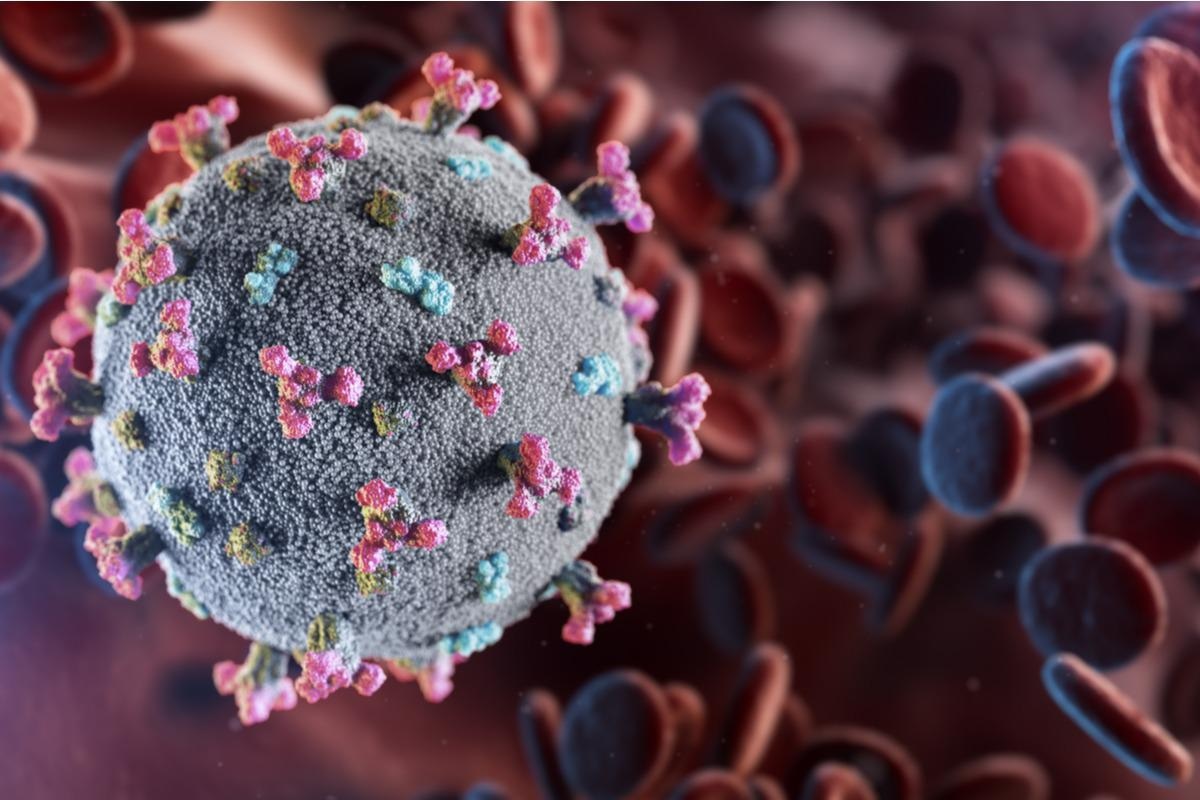Authorities in Wuhan, China, reported a spate of atypical pneumonia cases on December 31, 2019. The disease was dubbed coronavirus disease 19 (COVID-19), caused by the severe acute respiratory syndrome coronavirus 2 (SARS-CoV-2).
 Study: Long-Term, CD4+ Memory T Cell Response to SARS-CoV-2. Image Credit: creativeneko/Shutterstock
Study: Long-Term, CD4+ Memory T Cell Response to SARS-CoV-2. Image Credit: creativeneko/Shutterstock
Background
According to recent studies, neutralizing antibody titers fall dramatically throughout the first eight months after symptom onset and fall by up to 53% after a year. An in-depth study of the development of cellular immunity will considerably assist in a better understanding of the dynamics of reinfections.
Previous research has found that SARS-CoV-2-specific T cell responses remained persistent for 8 to 10 months. The current vaccines used against SARS-CoV-2 only target viral host cell entry mechanisms such as the spike (S) glycoprotein and the receptor-binding domain. However, T cells respond to extra structural proteins such as envelope (E), membrane (M), and nucleocapsid (N) in previously infected patients (N).
About the study
In a recent study published in Frontiers in Immunology, a 9-month investigation was performed on a group of previously infected healthcare workers. T cell responses were measured to three SARS-CoV-2-associated antigens (S, M, and N), as well as the endemic coronaviruses HCoV-OC43 and HCoV-NL63.
The study included 36 patients who had previously been infected with SARS-CoV-2 and had an average age of 35.8 years, with 69.4% of them being female. A control group that had not been exposed was matched in age and gender. SARS-CoV-2 infection was confirmed by PCR test in 63.9% of previously infected participants, and 94.4% had a positive anti-SARS-CoV-2 antibody titer.
Findings
All of the previously affected individuals experienced minor disease. The most common symptoms were a loss of taste or smell and a headache. A dry cough and a fever were also regularly reported symptoms. Although SARS-CoV-2 infection was confirmed by PCR or antibody testing, 16% of participants reported no symptoms.
The percentages of SARS-CoV-2-specific T cells in peripheral blood mononuclear cells isolated from previously infected and unexposed people at three months post symptom onset were determined and compared. CD4+ T cells specific for the N-terminal (S-1) and C-terminal (S-2) spike glycoprotein peptide pools, as well as the membrane (M) and nucleocapsid (N) peptide pools, were found in higher numbers in previously infected people. At least one of the peptide pools elicited a response in 88.9% of the people tested. The S-1 and S-2 pools were recognized by around 60% of people, whereas the M peptide pool was recognized by 61.8% of people. 69.44% of previously infected people had the strongest and most common reaction, which was specific for N.
The S glycoproteins generated by SARS-CoV-2 and the endemic coronaviruses HCoV-OC43 and HCoV-NL63 were tested for cross-reactivity. The previously infected cohort was separated into subgroups reactive or unreactive against either the N- or C-terminus of OC43 and NL63. The percentages of SARS-CoV-2 S-1- and S-2-specific T cells were assessed to investigate cross-reactivity between the HCoV and SARS-CoV-2 spike glycoproteins. Study subjects who reacted to OC43-1 and NL63-1 had a greater percentage of S-1-specific T cells.
Furthermore, compared to the HCoV-unreactive group, those subjects had a roughly two-fold higher reaction rate. A comparable impact was seen in the OC43-2-reactive subgroup. Compared to the non-reactive group, NL63-2-reactive T cells revealed just a minor change. Both C-terminal groups, on the other hand, showed higher rises in response rate than the N-terminal groups. The overall response rate of OC43-2-reactive participants increased by around two-fold, whereas that of NL63-2-reactive subjects increased by nearly three-fold.
The longevities of cellular and humoral responses of previously infected participants to SARS-CoV-2 were examined. Twenty-seven of the initial 36 infected patients were followed for nine months following initiation of symptoms. After nine months, the proportion of S-1, S-2, M, and N peptide pool-specific T lymphocytes declined marginally. Breaking down each individual's T cell response to the SARS-CoV-2 peptide pools indicated donor-specific T cell frequency variations. In some individuals, the proportion of reactive T cells grew with each visit, while in others, it decreased.
Antigen recognition increased somewhat between 3 and 6 months, then declined by nine months. Following nine months, 74% of participants recognized at least one SARS-CoV-2 peptide pool. The N peptide pool induced a CD4+ T cell response in 70.4% of previously infected patients after three months, 92.3% at six months, and 55.6% at nine months, equivalent to the spike and membrane proteins.
Implications
This study shows that SARS-CoV-2 and HCoV cross-react in both previously infected and uninfected participants. It is unclear whether past HCoV immunity enhances defense against SARS-CoV-2. SARS-CoV-2-induced cellular immunity lasts up to 9 months. More research is needed to determine how long SARS-CoV-2-specific T cell reactivity can remain.
However, humoral immunity and SARS-CoV-2-specific antibody titers dramatically fall nine months after infection. Thus, T cell reactivity may be a better predictor of protective immunity. Adding structural SARS-CoV-2 protein sequences to the spike glycoprotein could boost the efficacy of COVID-19 mRNA vaccines in the future.